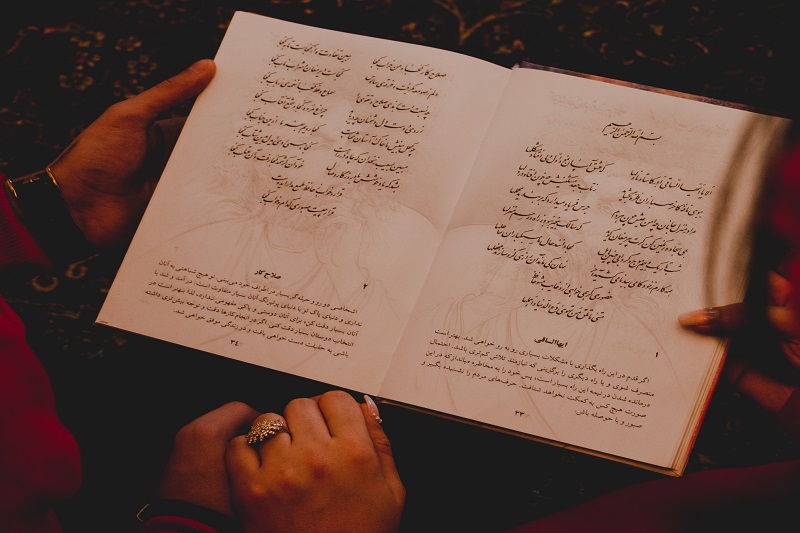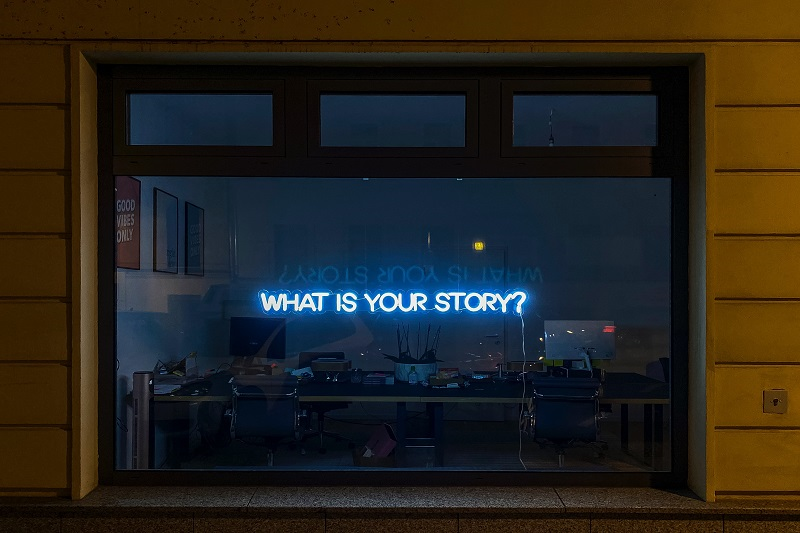Literary arts are a fundamental part of human communication and expression. It has the power to shape our understanding of the world, foster empathy, and create meaningful connections among individuals and communities.
In Ranaa, we have tried to enable individuals to express their creativity, thoughts, and emotions, as well as explore complex ideas and societal issues through literary arts. We believe that all humans have the ability to preserve cultural heritage, provide entertainment, provoke thought, and offer perspectives on the human experience.
Poetry Reading Event:

Poetry is a form of literary expression that uses rhythmic language, imagery, and sound patterns to evoke emotions and convey ideas. It often employs techniques such as meter, rhyme, and metaphor to create a powerful and concise form of artistic expression.
In Ranaa poetry reading event we try to create a supportive and inclusive atmosphere, fostering a sense of community among poets and poetry enthusiasts. we provide an opportunity for poets or poet lovers to connect with their audience on an emotional and intellectual level, as well as receive feedback and appreciation for their work.
As you may know Iran has a long and illustrious tradition of poetry, with many renowned poets who have made significant contributions to Persian literature. Here are a few notable Iranian poets:
Molana (1207-1273): also known as Jalal ad-Din Muhammad Rumi, is one of the most influential and widely read Persian poets. His poems, written in Persian and translated into various languages, explore themes of love, spirituality, and the pursuit of divine connection. Molana's works, such as the Mathnawi and the Divan-e Shams-e Tabrizi, have had a profound impact on Persian and world literature.
Hafez (1325-1389): Khwaja Shams-ud-Din Muhammad Hafez-e Shirazi, commonly known as Hafez, is another revered Persian poet. His lyrical and mystical poems, collected in the Divan-e Hafez, delve into themes of love, wine, and spirituality. Hafez's works are highly regarded for their beauty, wisdom, and deep insight into the human experience.
Saadi (1184-1283): Abu-Muhammad Muslih al-Din bin Abdallah Shirazi, popularly known as Saadi, was a Persian poet, philosopher, and traveler. His most famous work, the Bustan (The Orchard), and the Gulistan (The Rose Garden) are collections of moral stories, anecdotes, and poetry. Saadi's writings offer valuable lessons on ethics, human behavior, and the importance of empathy.
Forough Farrokhzad (1935-1967): Forough Farrokhzad was a prominent female poet who emerged in the mid-20th century. Her poetry challenged societal norms and explored themes of female identity, love, and social injustice. Farrokhzad's works, including "Another Birth" and "The Captive," are characterized by their emotional intensity, lyrical style, and progressive outlook.
Ahmad Shamlou (1925-2000): Ahmad Shamlou was a renowned modern Iranian poet often referred to as the "Poet of Liberty." His poetry reflects his deep concerns about social justice, political repression, and human rights. Shamlou's works, such as "Manifesto" and "The Quatrains of Night," are celebrated for their innovative style and powerful expression of dissent.
These are just a few examples of the many talented Iranian poets who have enriched Persian literature throughout history. Iranian poetry continues to thrive with contemporary poets exploring a wide range of themes and styles, making significant contributions to the literary landscape.
We have tried can feature a diverse range of poetic styles, themes, and languages, showcasing the richness and variety of poetic expression in our poetry reading events. attending a poetry reading can be a wonderful experience, offering the chance to engage with poetry in a unique and personal way and to discover new voices and perspectives within the poetic community.
Prose Reading Event:
.jpg)
Iranian literature is not limited to poetry; it also encompasses a rich tradition of prose writing Prose refers to written or spoken language that does not follow a specific poetic structure. It includes various forms such as novels, short stories, essays, biographies, and memoirs. Prose allows for more expansive storytelling, character development, and exploration of complex themes and ideas.
In prose reading events we provide opportunities for authors or participants to take turns reading aloud from their favourite works in front of an audience. They may choose to read from an Iranian famous prose books.
Iranian prose includes various genres such as novels, short stories, memoirs, and philosophical works. Here are some notable Iranian prose authors:
Sadegh Hedayat (1903-1951): Sadegh Hedayat is considered one of the pioneers of modern Persian fiction. His most famous work, "The Blind Owl," is a dark and introspective novel that explores themes of alienation, existentialism, and the human psyche. Hedayat's writing style and psychological depth have had a lasting impact on Iranian literature.
Jalal Al-e Ahmad (1923-1969): Jalal Al-e Ahmad was a prominent Iranian writer and social critic. His works, such as "By the Pen" and "The School Principal," address social and political issues in Iranian society. Al-e Ahmad's writings often reflect his concern for cultural identity, Western influence, and the impact of modernization on traditional values.
Simin Daneshvar (1921-2012): Simin Daneshvar was the first Iranian woman to publish a novel in Persian. Her novel, "Savushun" (Mourners of Siyahkal), is a multi-generational saga set against the backdrop of Iran's Constitutional Revolution. Daneshvar's realistic portrayal of rural life and her exploration of women's roles in society have made her an influential figure in Iranian literature.
Mahmoud Dowlatabadi (born 1940): Mahmoud Dowlatabadi is a prominent Iranian novelist and short story writer. His novel "Kelidar," a multi-volume epic, tells the story of a Kurdish family against the backdrop of Iran's socio-political changes. Dowlatabadi's works often address social justice, rural life, and the struggles of ordinary people in the face of political oppression.
These authors represent just a small sample of the diverse range of Iranian prose literature. Iranian prose continues to evolve and captivate readers with its exploration of social, political, and personal themes, providing unique insights into Iranian society and the human experience.
Drama Reading Event:
Drama refers to written works intended for performance on stage, often called plays. Dramatic literature involves dialogue, monologues, and stage directions to convey stories, conflicts, and character interactions.
In Ranaa drama reading event we gather individuals or a group of actors come together to perform dramatic works in a reading format. It provides an opportunity to experience and appreciate plays, scripts, or scenes from theatrical works in a stripped-down, script-in-hand performance.
During a drama reading event, participants typically sit or stand on a stage or in a designated area while reading from the scripts. The focus is primarily on the spoken dialogue and the dramatic elements of the piece rather than elaborate costumes, sets, or full theatrical production.
Storytelling Performance:

Before the advent of writing, storytelling was primarily an oral tradition. It involves the spoken word, passing down stories, legends, and cultural traditions from one generation to another. Oral storytelling relies on the art of narrative performance, engaging listeners through voice, gestures, and expression.
"Naghali" is a traditional form of storytelling that holds a significant place in Iranian culture. It involves a storyteller, known as a "naghāl," who narrates epic tales, historical events, or religious stories in a rhythmic and melodic manner.
Naghali has its roots in ancient Persia and has been a popular form of entertainment and cultural expression for centuries. The naghāl sits in a central location, often in a public space or a gathering, and uses expressive gestures, facial expressions, and vocal intonations to bring the stories to life.
The naghāl's repertoire usually includes stories from the Shahnameh (Book of Kings), the ancient Persian epic poem.
The storytelling often incorporates elements of music, poetry, and traditional instruments such as the drum (daf) or the oud. Naghali performances serve multiple purposes in Iranian culture. They entertain and engage audiences, captivating listeners of all ages with their captivating storytelling techniques.
Naghali also plays a role in cultural preservation, as it helps keep ancient tales and historical events alive in the collective memory of the community.
Moreover, naghali has traditionally been a means of transmitting moral and ethical values, promoting social harmony, and instilling a sense of pride in Persian history and identity. It can also serve as a vehicle for cultural education, especially for younger generations, fostering an appreciation for the rich literary and oral traditions of Iran.
In Ranaa, we have tried to enable individuals to express their creativity, thoughts, and emotions, as well as explore complex ideas and societal issues through Stroytelling performance. We believe that all of humans have ability to preserve cultural heritage, provide entertainment, provoke thought, and offer perspectives on the human experience.

.jpg)
